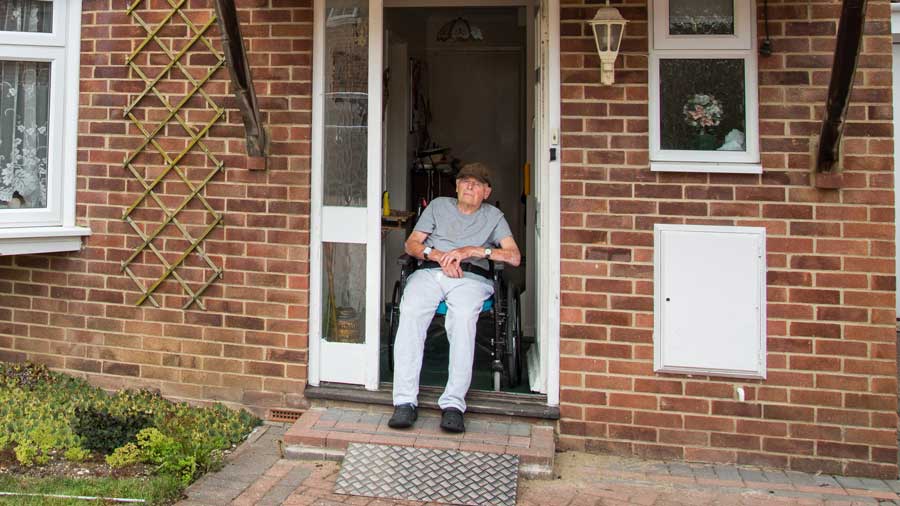Image: Istock
Housing that supports healthy ageing
A call for national policy change and market incentives, as well as ongoing local action to ensure everyone can age with dignity, independence and choice

HEALTH, CARE & SUPPORT

Holly Holder
Senior Consultant, Campbell Tickell

Holly Holder
Senior Consultant, Campbell Tickell
Issue 79 | September 2025
The recent Spending Review was met by the housing sector with positivity and a huge sigh of relief. The long sought after recognition of the value of safe, affordable, good quality housing was finally delivered in both verbal and financial commitment.
Much is known about the need for more housebuilding in England. Similarly, that we have an ageing population is also an accepted fact. However, the need to increase the range, suitability and affordability of housing suitable for older people is often absent from the debate. This is despite the vital role housing plays in creating safe, healthy environments that enable a range of living arrangements, with care and support as needed (as noted in ADASS’ policy priority to bring ‘Care Closer to Home’).
“There are several opportunities to embed these principles and create a future with greater choice and control for older people and their families.”
Improving choice and control for older people
Whether the Spending Review translates into additional older people’s housing will depend on a number of factors, as set out in Campbell Tickell and the Abbeyfield Living Society’s 15 point plan.
Between the forthcoming long-term housing strategy, further details on the Social and Affordable Housing Programme, and other imminent policies, there are several opportunities to embed these principles and create a future with greater choice and control for older people and their families.
The forthcoming long-term housing strategy should be guided by the need to consider what housing people need now and in the future. There needs to be a cross-departmental commitment to both improving the homes that already existing and future-proofing the ones that will be built over the next Parliament. (Side note here that many of the features of older people’s housing are beneficial for people of all ages).
In an ideal scenario, people of all ages have a choice between a set of high-quality options about where they want to live. For some, this will mean support to adapt, repair and maintain their current homes, with access to independent and trusted information and advice.
older people are too well off for social housing but too poor for the current market offer
estimated additional cost to build a three-bedroom, semi-detached house to accessibility standards
Market incentives and direction
For others, this will mean moving into an affordable, care or retirement facility but options are limited. Leaving new build retirement facilities to the market has left a gap for those with mid-low wealth, with nearly 2.5 million older people who are too rich for social housing and too poor for the current offer. The market needs direction and one way to achieve this in the affordable and social housing sector would be to set targets or incentivise building older people’s housing, or at the very least recognise and create a level playing field for the additional costs when building these homes (the need for communal areas, grounds, etc).
Minimum accessibility standards
An easy win for the government would be to commit to raising the minimum accessibility standards of all new build housing. Estimates suggest that building a three-bedroom, semi-detached house to accessibility standards (M4(2)) would only cost an additional £644 per home, a fraction of the overall price.
Recruit and retain quality staff
Wherever people are living, a growing number will need access to some level of support. Existing providers of sheltered and supported housing should be enabled to maintain their current properties to a high standard and supported to recruit and retain quality staff. Access to social care – either at home or in a residential or nursing home – will become even more pressured with a resolution to the sector’s challenges.
Remodelling, repurposing and upgrading facilities
While we wait for a national policy shift, there is still much that we can do locally to support and enable the right housing and advice to be developed. Campbell Tickell helps our clients to review their current housing, care and support offer to older people, finding ways to strengthen it – e.g. through remodelling, repurposing and upgrading facilities – and optimising the design of services. All these activities mean that local authorities are pushing in the right direction while we wait for a bigger policy initiative.
Demographic change is not a future problem. Nor is it a surprise that has crept up on us (the oldest baby boomers are now 78 years old). Older people need homes that enable them to lead fulfilling lives, and the current policy arena gives us the opportunity to make that a reality.
After all, it’s the lucky ones who grow old.
This article originally appeared on the ADASS website.
“Older people need homes that enable them to lead fulfilling lives and the current policy arena gives us the opportunity to make that a reality.”

